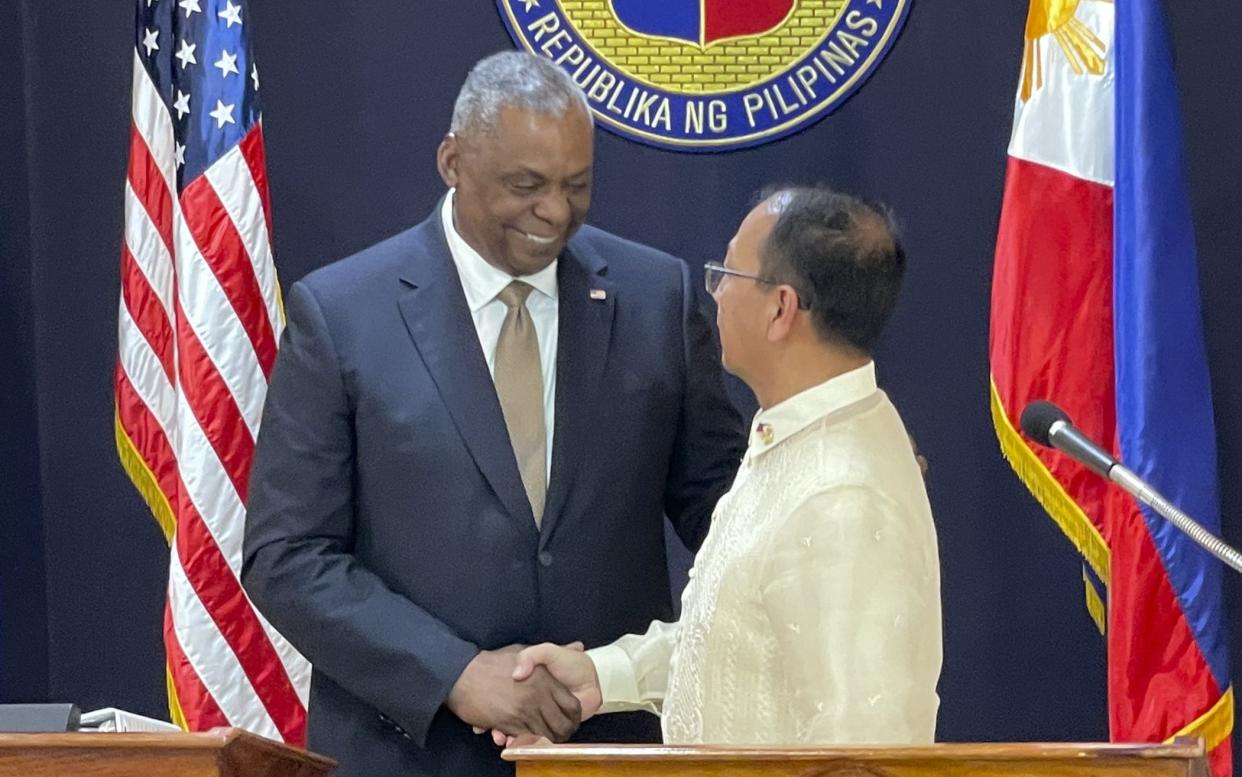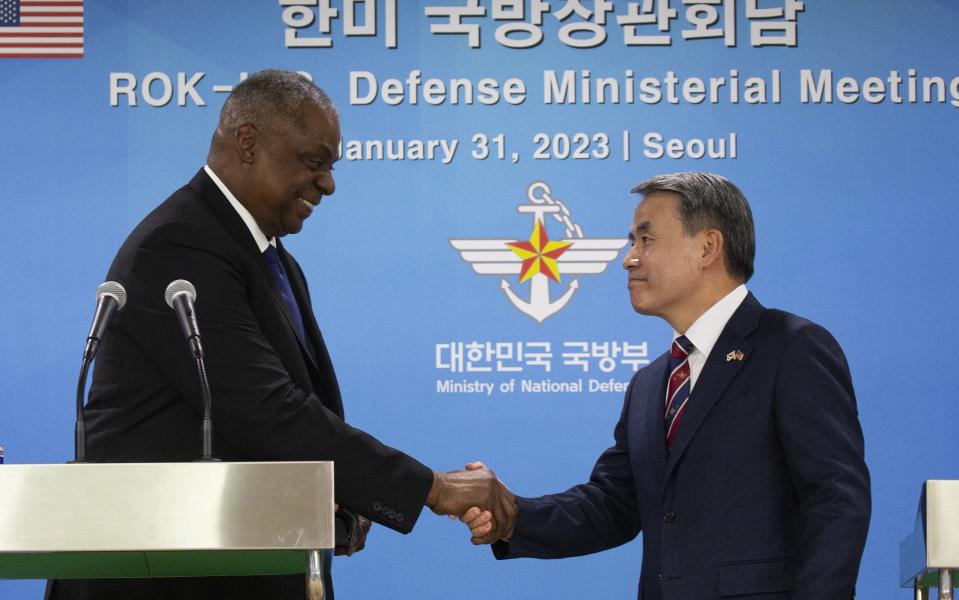US secures bases deal with Philippines to complete Western alliance arc

The United States on Thursday struck a deal for its troops to use China-facing military bases in the Philippines, securing an arc of alliances to counter Beijing expansion.
The agreement comes amid a burgeoning regional arms race triggered by the twin threats of China’s takeover ambitions of Taiwan and North Korea’s rapidly developing nuclear weapons programme.
It also comes on the eve of a rare visit by Antony Blinken, the US secretary of state, to China this weekend where he will reportedly meet president Xi Jinping.
The Philippines deal was agreed on Thursday by Lloyd Austin, the US defence secretary, in Manila and followed his visit to South Korea to fortify a growing coalition of Western-leaning Asian allies.
Mr Austin said the allies were committed to “strengthening our mutual capacities to resist armed attack”, as he accused China of making “illegitimate claims in the West Philippine Sea”.
Under the new arrangements, the US will have its largest military presence in the Philippines in 30 years. The country sits between the South China Sea and the Pacific, strengthening the sweep of US alliances from South Korea and Japan to Five Eyes intelligence partners, Australia and New Zealand.
It will allow Washington to deploy military equipment and rotate its troops through nine locations controlled by the Philippines, significantly expanding its current access to allow a more rapid and flexible response to possible conflict.
The exact location of the new bases has not been revealed but it is believed three could be on the northern island of Luzon, facing the Bashi Channel that separates the Philippines from Taiwan, which China has promised to take over.
“For a Taiwan contingency, the ability to have access to the northern Philippines is going to be important in terms of the US being able to control the Bashi Channel but also in terms of protecting Philippines territorial integrity,” Drew Thompson, a visiting senior research fellow at the Lee Kuan Yew School of Public Policy at the National University of Singapore, told The Telegraph.
US and regional military officials fear there is a growing risk China will try to forcibly seize democratic Taiwan before the end of the decade.
As part of its efforts to broaden its influence in the Indo-Pacific, the US reopened an embassy in the Solomon Islands on Wednesday after a 30-year absence, and in response to China signing a security pact with Honiara last year that led to fears of a future Chinese naval base there.
Announcing the news, Mr Blinken said that “more than any other part of the world, the Indo-Pacific region – including the Pacific Islands – will shape the world’s trajectory in the 21st century”.
But China’s response to the latest US moves in the region underscored the hurdles the secretary of state will face this weekend as he seeks to smooth over relations.
On Thursday, Mao Ning, a Chinese foreign ministry spokesperson, accused the US of threatening regional peace and stability.
“Out of self-interest, the United States continues to strengthen its military deployment in the region with a zero-sum mentality, which is exacerbating tension in the region and endangering regional peace and stability,” she said.
North Korea, a Chinese ally, issued its own warning in response to the defence secretary’s trip to Seoul earlier this week, where he vowed to expand military drills with South Korea and boost nuclear deterrence planning.

In a statement released by state media, Pyongyang warned the region had reached an “extreme red line” after Mr Austin’s visit, accusing the US of pushing the Korean Peninsula towards becoming a “huge war arsenal”.
The Philippines is the United States’ oldest treaty ally in Asia. But relations struggled under Rodrigo Duterte, the former president, who took the country in a more pro-Beijing direction and threatened to end the Visiting Forces Agreement, which gives legal protection to US military based there.
Collin Koh, a research fellow with the S Rajaratnam School of International Studies in Singapore, said the latest deal was significant “for the entire alliance as a whole”.
He pointed to renewed US cooperation at a shipyard in Subic Bay on the west coast, which would be “instrumental not just for the Philippine Navy’s own expanding fleet, but also for the US Navy’s projection of presence into the South China Sea.”
Euan Graham, a Singapore-based senior fellow at the International Institute for Strategic Studies, said if the additional bases included Subic Bay and Luzon, it would make it “harder for China to operate warships and aircraft in the vicinity.”
While it carried risks for Manila, “an enhanced US military presence and defence guarantee represents its most viable option to deter China from moving further into the Philippines' Exclusive Economic Zone and archipelagic waters,” he said.
In a Thursday press conference, Mr Austin stressed it would be an “opportunity to increase our effectiveness, increase interoperability.”
He added: “It is not about permanent basing, but it is a big deal.”


